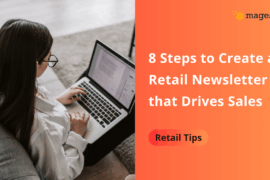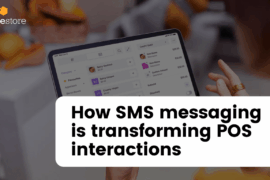Most retailers have a simple omnichannel strategy: provide a consistent and seamless shopping experience online, on mobile and in-store.
Planning and executing the omnichannel strategy, however, can be pretty complicated.
This has particularly been true for apparel retailers, who struggle to duplicate the in-store experience, which entails letting customers try on different styles, sizes and fits before finally deciding on a purchase.
But Finish Line, a national athletic apparel and footwear retailer, is taking a different approach.
Related post: Top 25 Omnichannel Retailers and what to learn from them

In a recent interview with PYMNTS, Michael Grimes, the company’s senior vice president of brand and consumer experience, explained that, instead of trying to replicate its in-store experience on mobile and online, the company is focusing on improving features that are unique to its web and mobile experience and integrating those into its in-store experience.
The focus is on collecting and making better use of customer data, using video, music, photography and other content to help market shoes, and honing the ability to get customers the information they want at a moment’s notice, Grimes said.
“We’ve worked hard at Finish Line to…become considered leaders on the digital front for quite some time,” he said. “And what we’re really doing now is going back to the drawing board when it comes to our brick-and-mortar stores. We want to integrate the best parts of our online experience into the in-store environment.”
Omnichannel Software
A Retail Management System streamlines separate sales channels to provide seamless shopping experiences anytime, anywhere.
Bringing Online to Brick-and-Mortar
The company’s efforts to offer their most effective online and mobile features in-store began roughly two years ago when the company decided to gradually redesign both its flagship and smaller retail locations, according to Grimes.
So far, the company has redesigned three of its flagship stores in Los Angeles, Chicago and New York City and more than 80 revamped smaller stores across the country, which the company refers to as its “store of now,” over the course of the past 18 months.
In an effort to provide a dynamic, web-like experience, the company has redesigned its storefronts to feature pop-up shop-style displays, which can be changed and modified at a moment’s notice to give the storefront a fresh look and new feel, Grimes said.
“We’ve had people ask us if we’re going to update our website to match the new stores when we’re done, but really we’ve been doing the reverse of that with our store design,” he said. “We call it dynamic retail. It gives us the ability to change our displays or other elements of our store in the same way we can make instant changes and updates to our digital environment to display new offers or content on the homepage.”
The company is also focusing on redesigning its in-store experience.
The Indianapolis-based retailer is investing in mobile beacons that can recognize shoppers entering and leaving its stores, allowing them to use their phones to get more information about products available for sale.
Grimes said that the company is concentrating more on mobile-based features that enhance its customers’ in-store experiences. He cited integrations that allow consumers to use their phones to preview shoes they’re trying on in-store in front of famous landmark locations using augmented reality. In-store shoppers can even post pictures to social media accounts using the integration.
“Mobile is everything in our world,” Grimes said. “Because for millennials, and now Gen Z or whatever they will end up being called, the mobile device is everything for them. So, we spend a lot of time thinking about our mobile app, not just how it works and operates as a shopping channel, but how it can improve the in-store experience.”
Delivering a Digital Future
The company’s omnichannel strategy was initially conceived years ago, but Grimes said that the company’s initiatives have not been limited to the technology of the time.
Other than integrating augmented reality and mobile beacons, Finish Line has more new technology planned for its stores, including improved mobile beacon technology.
With the new beacons, if a customer hasn’t made a purchase yet, the company can reach out with an email marketing message, much in the same way that customers who leave items in their eCommerce shopping carts will receive a prompt reminding them to complete their purchases.
The company is also investing in on-demand content that can be accessed by consumers from an in-store kiosk or display, recommending items or pairings via those displays, among others.
“Down the road, we want to use those beacons to identify and also [to] launch re-targeting efforts, should you leave the store without purchasing, just like we do today online or on mobile,” Grimes said. “And, when we add other new features to our mobile app or our online store, we want to add those here too.”
The end goal, he said, is to give brick-and-mortar shopping an online dynamic and feel.
“Each and every time a consumer walks into one of our new stores,” he said, “we want them to feel something different — just like [how] we can give them a different feel each time they log on to our website or app.”
It seems that the key to finding the omnichannel finish line might be in focusing more on improving the in-store experience.
By PYMNTS




